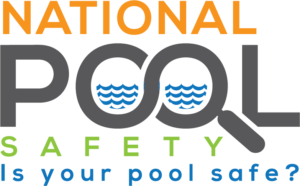How Do I Ensure Swimming Pool Safety

Owning a swimming pool is a luxury that brings joy, relaxation, and a perfect way to cool off during hot summer days. However, with the pleasure of having a pool comes the responsibility of ensuring it is safe for everyone who uses it. Whether you have a pool at home or manage a public swimming facility, safety should always be a top priority. Here’s a comprehensive guide on how to ensure swimming pool safety.
For an added layer of safety, consider professional swimming pool compliance inspections from National Pool Safety, ensuring your pool meets all the necessary safety standards.
1. Install Proper Fencing
One of the most effective ways to prevent accidental drownings is to install a fence around your swimming pool. The fence should be at least four feet high and have a self-closing, self-latching gate that opens outward. The latch should be out of reach of young children. This barrier prevents unsupervised access to the pool, significantly reducing the risk of accidents.
2. Use Pool Covers
A sturdy pool cover is another essential safety measure. When the pool is not in use, especially during off-season months, a cover can prevent accidental falls into the water. Ensure the cover fits securely over the pool and can support the weight of an adult without collapsing.
3. Implement Safety Alarms
Pool alarms add an extra layer of security. There are different types of alarms you can install:
- Gate Alarms: Sound an alert when someone opens the gate leading to the pool area.
- Surface Alarms: Detect disturbances on the water’s surface, indicating someone or something has entered the pool.
- Wearable Alarms: These can be worn by children and sound an alert when they get wet.
4. Supervise Constantly
Never leave children unattended near a pool, even if they know how to swim. Active supervision means being within arm’s reach, paying close attention, and avoiding distractions like reading or using a phone. Designate a responsible adult as the “water watcher” during pool parties or gatherings.
5. Learn CPR
Knowing how to perform CPR can save lives in an emergency. Take a certified CPR course and ensure all family members and regular pool users are trained. CPR training is crucial for quickly responding to drowning incidents and other poolside emergencies.
6. Enforce Pool Rules
Establish and enforce pool rules to ensure everyone understands and follows safety practices. Common rules include:
- No running or horseplay around the pool.
- No diving in shallow areas.
- No swimming alone.
- No alcohol consumption before or during swimming.
7. Regular Maintenance and Inspections
Maintaining your pool is not just about keeping the water clean; it’s also about ensuring the pool environment is safe. Regularly check for hazards like loose tiles, broken pool covers, and malfunctioning equipment. Schedule professional swimming pool compliance inspections to ensure your pool meets all safety regulations and standards. These inspections are essential to identify potential risks and ensure your pool is compliant with local safety laws and guidelines.
8. Educate Swimmers
Teach children and inexperienced swimmers basic water safety skills, such as how to float, tread water, and exit the pool safely. Encourage swimming lessons and consider enrolling children in formal swim classes to build their confidence and ability in the water.
9. First Aid Kit
Keep a well-stocked first aid kit near the pool area. It should include bandages, antiseptics, scissors, tweezers, and emergency contact numbers. Being prepared for minor injuries can prevent them from becoming major incidents.
10. Clear Pool Area of Hazards
Ensure the pool deck is free of toys, floats, and other items that can cause tripping or falling into the water. Store pool chemicals safely away from the pool and out of reach of children.
Conclusion
Swimming pool safety requires diligence, proper equipment, and a commitment to following best practices. By implementing these safety measures, you can create a secure environment that allows everyone to enjoy the benefits of swimming without unnecessary risks. Remember, safety starts with awareness and proactive actions. Always prioritize the well-being of your family and guests to ensure a fun and safe swimming experience.
By taking these steps, you can significantly reduce the risk of accidents and injuries, ensuring that your pool remains a safe and enjoyable place for all.




